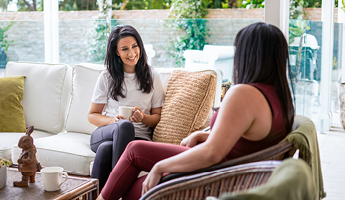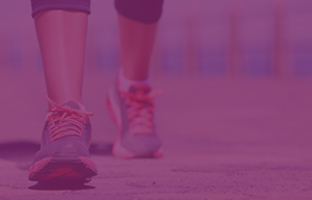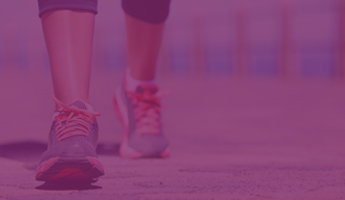Have you experienced a sudden, urgent feeling to rush to do a wee that’s so overwhelming you can’t concentrate on anything else? Do you leak urine at the sight of running water? Or when you come home from work and put the leys in the door? These are all examples of urge incontinence.
What is urge urinary incontinence?
It’s all in the name, “urge” incontinence is leaking that occurs with a strong urgency to wee.
For the most part of the day the bladder is a storage unit, filling with urine. The average adult bladder can hold around 600mls. As the bladder is filling, it sends messages to the brain about the degree of “fullness”. Over time, this urge to wee gradually gets stronger and stronger, until you eventually take yourself to the bathroom. Once you are on the toilet a message from your brain is sent to your bladder, and the bladder squeezes to release urine. In urge incontinence this messaging system becomes confused. You get strong urges to wee even when the bladder isn’t full, and the bladder will squeeze urine out even when you aren’t on the toilet.
Urge incontinence can be all consuming, and many women completely change their daily activities because they are worried about where the next toilet is. However, this type of incontinence can in many cases be easily treated with simple, non-invasive strategies such as bladder retraining and pelvic floor muscle training
What are common symptoms of urge urinary incontinence?
The most common symptom of urge incontinence is the involuntary loss of urine associated with a very strong and urgent desire to wee. If you experience urge incontinence you likely also feel the need to wee more frequently than most people.
Many women report “triggers” for urge incontinence. These are events or activities that trigger the bladder to squeeze and leak urine. Common triggers include:
- Running water
- Drinking tea, coffee or fizzy drink
- Eating certain foods (like tomatoes or lemons)
- Seeing the toilet block
- Putting the keys in the door
- Pulling your pants down
What causes urge incontinence?
The most common cause of urge incontinence is an overactive bladder (these terms overlap and often get confused; we’ve covered this in the FAQs at the bottom of this page)
Major causes of urge incontinence include things that impact the bladder - brain messaging connection or anything that impacts functional bladder capacity. This includes:
Ageing
Neurological disorders such as Parkinson’s Disease, Multiple Sclerosis, Spinal Cord injury
Pelvic floor muscle weakness
Pelvic organ prolapse
Pelvic surgery (e.g., Hysterectomy)
Urinary tract infections
Chronic constipation
Long history of poor bladder habits (Like emptying your bladder “just in-case”)
Symptoms usually get worse in times of stress and can be exacerbated by bladder irritants such as tea, coffee, or alcohol. However, it’s important to note that sometimes the reason for urge incontinence is unknown.
As you can see, there are lots of reasons why you might leak urine. And many of these factors can occur simultaneously. Your GP (General Practitioner) is the best person to help rule out medical conditions requiring urgent care (such as a urinary tract infection) and then refer you onto a specialist who can help you work out the root cause of your leaking. This may be a urologist, urogynaecologist or speciality pelvic floor physiotherapist. You can find a pelvic floor physio near you here
These professionals will take a full history and utilise assessment tools like an internal vaginal exam, bladder diary, or ultrasound to help specify what type of incontinence you have and why.
How to treat urge incontinence?
You might notice that fear of leaking urine, or the feeling of being busting to wee, has impacted your everyday activities. You might only go to certain events where you know a toilet is close by, or you might have completely restricted your fluid intake due to fear of leaking. You aren’t alone!
We’ve got good news, urge incontinence can actually be managed (in most cases) with some simple lifestyle changes, bladder retraining and pelvic floor muscle exercise. However, treatment doesn’t happen overnight, so the first steps to treating urge incontinence is to manage the leaks appropriately. This allows you to stay active and confident whilst treating the cause. You can find which Poise® pad or liner is best for your type of leaking
First line treatment for urge urinary incontinence involves:
Bladder retraining:
This is a behavioural retraining method which gradually increases the time between toilet visits and teaches ways to supress the urge sensation.Pelvic floor muscle exercises:
You can find an example of a 12-week pelvic floor muscle training program hereLifestyle changes:
Including increasing or decreasing fluid intake to optimise hydration, avoiding bladder irritants and weight loss if appropriate.Managing constipation/ bowel health
Tibial Nerve TENS:
(Transcutaneous Electrical Stimulation). This is a form of Neuromodulation that involves putting electrical stimulation pads onto the inner ankle. This treatment looks to target the messaging along the nerves to the bladder. A physiotherapist, urologist or urogynaecologist can perform this treatment for you.Other management options include medication targeted at reducing bladder overactivity, Botox to the bladder wall and surgical intervention as a last line.
This content is general and nature and not intended to be a substitute for professional medical advice, diagnosis or treatment. Always seek advice from a qualified health care professional with any questions regarding your concerns.
FAQS
Urge incontinence vs overactive bladder?
Urge incontinence is a type of urinary incontinence that involves leaking wee during a sudden and strong urge to use the toilet. Compare this to overactive bladder, which is a syndrome that is characterised by a frequent and urgent need to wee. You can have overactive bladder and not leak urine; we call this dry overactive bladder. Or you can have overactive bladder AND experience urge incontinence (i.e., You leak wee).
What is the most common cause of urge incontinence?
The most common cause of urge incontinence is overactive bladder syndrome. But it’s important to know that overactive bladder syndrome is not a “disease”. Rather, it’s a group of symptoms resulting from frequent bladder contractions or “squeezes”. This might occur because of a whole host of things such as an infection, neurological conditions, stimulants like alcohol, ageing, or long-standing poor bladder habits.
What is first line treatment for urge incontinence?
First line treatment for urge incontinence involves bladder retraining, pelvic floor muscle exercises, lifestyle changes and neuromodulation (tibial nerve TENS).
Useful resources:
National continence helpline (1800 33 00 66 FREE CALL) – you can speak to a continence nurse for free advice and information.
Continence Foundation of Australia (continence.org.au) – Free information on bladder and bowel conditions in both Women and Men, including information in other languages
Jean Hailes for Women’s Health (https://www.jeanhailes.org.au/health-a-z/bladder-bowel) – Free information targeted at improving Women’s Health across Australia throughout the lifespan.
References:
Urinary incontinence and pelvic organ prolapse in women: management NICE guideline [NG123]02 April 2019
Written for Poise by Caitlin Dunsford. Caitlin is a practicing Physiotherapist, with special interest and further training in Women's Health and Continence.







